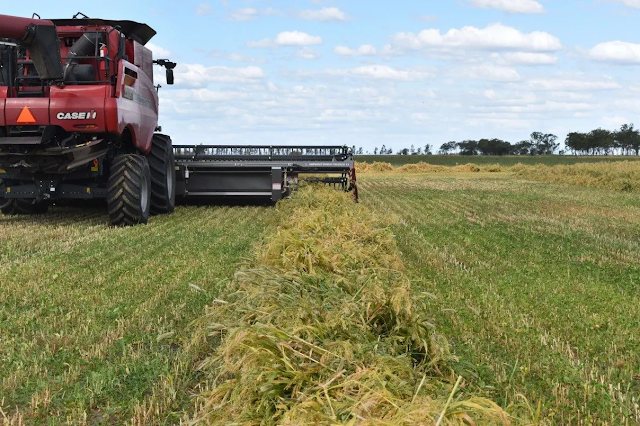Everything to Know about a Harvest Combine
A harvest combine, commonly known as a combine harvester, is a multifunctional machine designed to efficiently harvest various crops like wheat, corn, and soybeans. It integrates several operations, including cutting, threshing, and separating grain from the chaff, into a single process.
Components of a Harvest Combine
Header
The header is the front part of the combine responsible for gathering the crop. It comes in various widths to accommodate different crop types and field conditions.
Threshing Mechanism
Once the crop is gathered, the threshing mechanism separates the grain from the stalks and husks. This crucial component ensures efficient grain extraction.
Grain Tank
The grain tank stores the harvested grain until it's ready for unloading. Modern combines feature sizable grain tanks to minimise downtime during harvest.
Cleaning System
After threshing, the cleaning system removes any remaining debris and impurities from the grain, ensuring high-quality output.
Types of Harvest Combines
Harvest combines come in two main types: self-propelled and pull-type. Self-propelled combines are integrated units with their own engines and drivetrains, offering flexibility and autonomy. Pull-type combines, on the other hand, are towed by a separate tractor and are typically used in smaller operations.
Advantages of Using Harvest Combines
The utilisation of harvest combines offers numerous benefits to farmers, including increased efficiency, reduced labor costs, and improved harvest quality. These machines streamline the harvesting process, allowing for faster and more productive operations.
Modern Features and Technology
Modern harvest combines are equipped with advanced features and technology to further enhance efficiency and productivity. GPS guidance systems enable precise field navigation, while yield monitoring systems provide valuable data for decision-making. Automated functions streamline operation, reducing operator fatigue and optimising performance.
Maintenance and Care Tips
To ensure optimal performance and longevity, regular maintenance and care are essential for harvest combines. This includes routine inspections, lubrication, and timely repairs. Proper storage during the offseason also helps prevent deterioration and prolongs the lifespan of the equipment.
Environmental Impact
While harvest combines offer significant benefits in terms of productivity, their operation can have environmental implications. Issues such as soil compaction and fuel consumption need to be addressed through sustainable farming practices and technological advancements.
Global Market Trends
The global market for harvest combines is influenced by factors such as agricultural policies, technological advancements, and market demand. Emerging economies, in particular, present lucrative opportunities for market expansion and innovation.
Future Prospects and Innovations
The future of harvest combines lies in continued technological innovation and sustainability. Advancements in precision agriculture, robotics, and renewable energy integration are poised to reshape the landscape of agricultural machinery.
Conclusion
Harvest combines are indispensable tools in modern agriculture, offering efficiency, productivity, and versatility to farmers worldwide. As technology continues to evolve, these machines will play a crucial role in meeting the growing demand for food production while minimising environmental impact.

.jpg)
.jpg)

Comments
Post a Comment